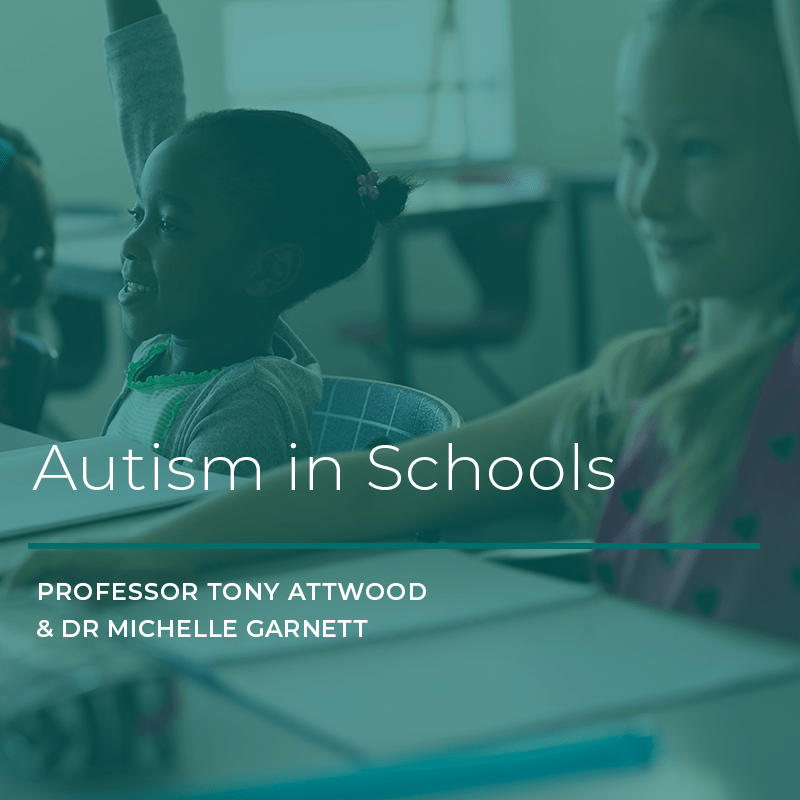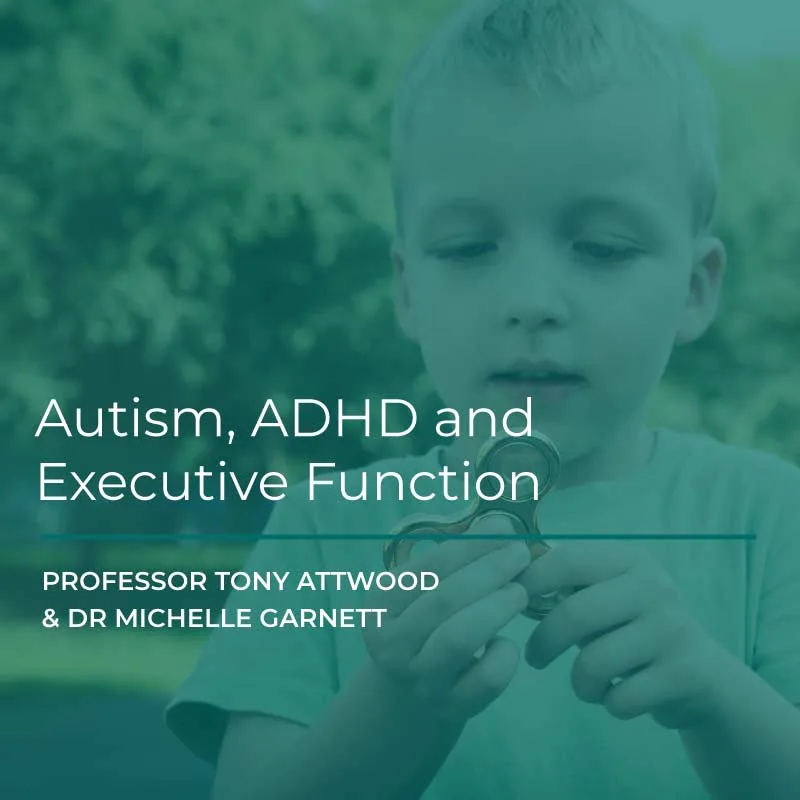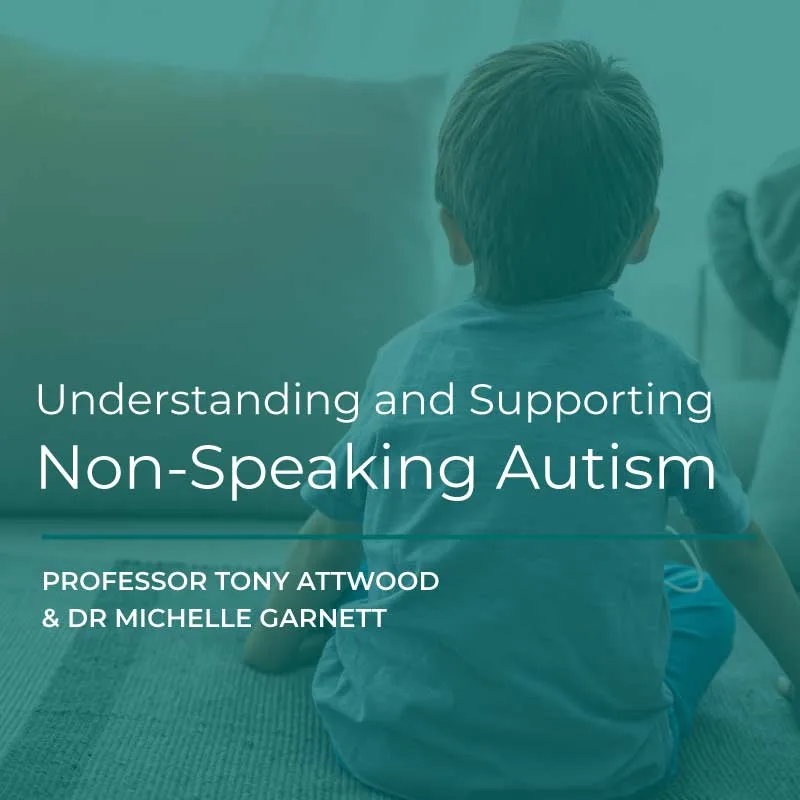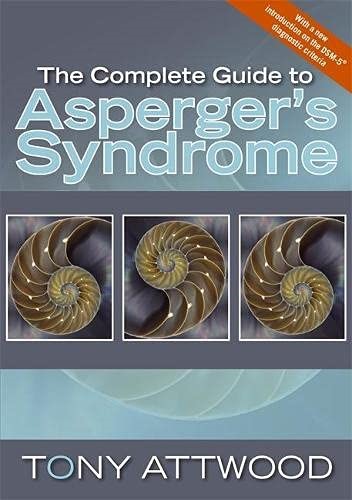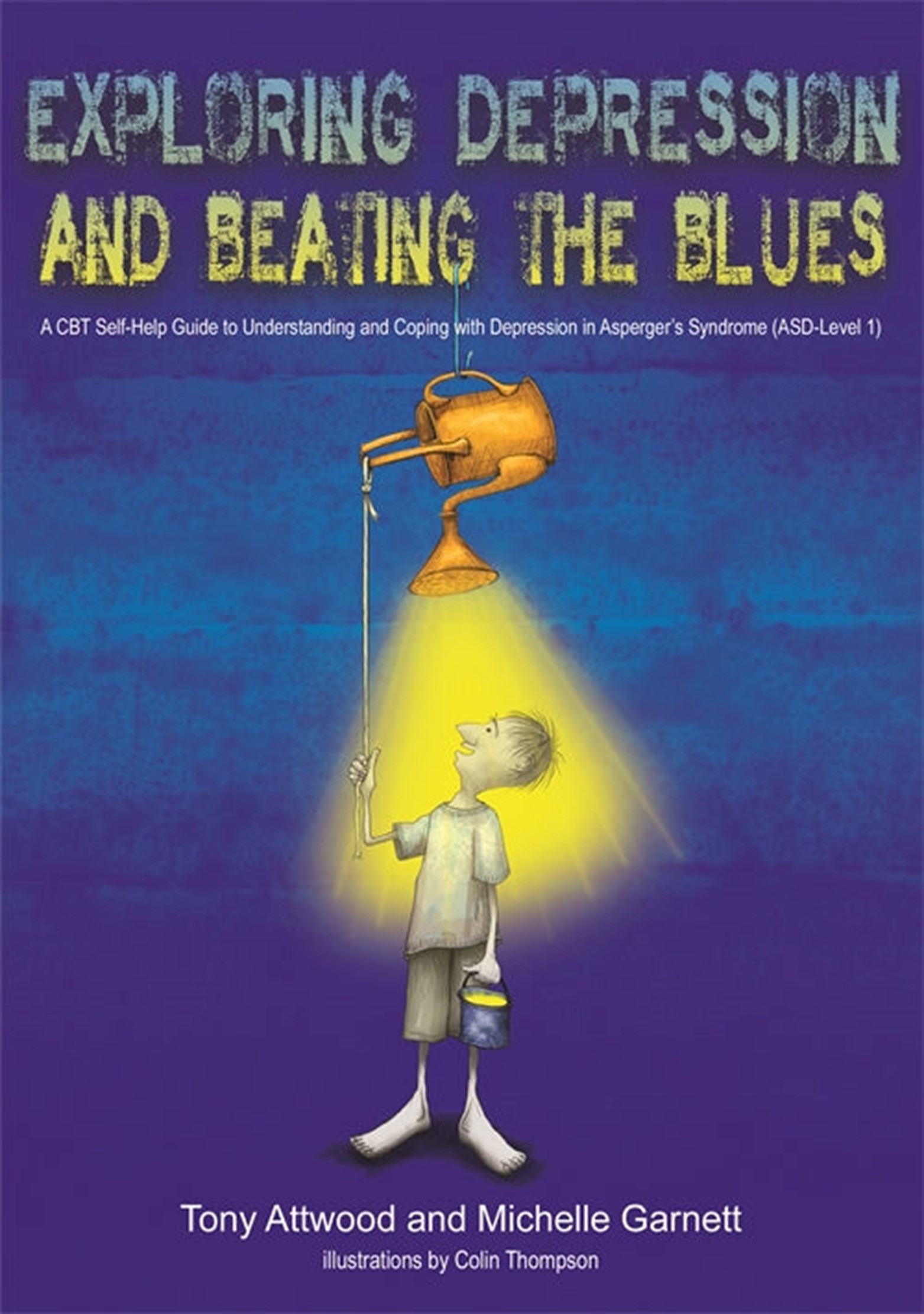Welcome to Tony Attwood's Website
A guide for parents, professionals and people with Asperger's Syndrome or Autism Spectrum Disorder Level 1 and their partners.
Ask Dr. Tony Webcasts
Regular podcasts in conversation with autismhangout.com founder/reporter Craig Evans > More Info
Participate in Research
Read about research projects that are seeking participation and find out how to get involved > More Info

to be one of the world’s foremost experts on
Autism Spectrum Disorder.
Upcoming Events
Books by Tony Attwood
Tony has published many books about Asperger's Syndrome and Autism.
He has also co-authored and contributed to publications with other experts.
He has also co-authored and contributed to publications with other experts.
New Release Out Now
Autism Working:
A Seven-Stage Plan to Thriving at Work
By Tony Attwood and Michelle Garnett


Tony Attwood, Michelle Garnett, Julia Cook, Louise Ford, and Stefanie Runham

Attwood & Garnett Events
FOUNDED BY PROFESSOR TONY ATTWOOD & DR MICHELLE GARNETT
Dr Michelle Garnett PhD is a clinical psychologist who has specialised in autism within her own private practice for over 27 years. She has co-authored six highly regarded books on autism, five with Prof Tony Attwood. Her 2018 book with Barb Cook is a seminal work on the female presentation, Spectrum Women: Walking to the Beat of Autism. Her most recent books Having Fun with Feelings on the Autism Spectrum and Ten Steps to Reducing Your Child’s Anxiety on the Autism Spectrum provide guidance to parents of young children on the autism spectrum.
Together Tony and Michelle have created a series of online courses that are available to download. There are also webinars consisting of a series of mater classes.
Recent Articles by Tony
05 November 2023
Can Autism be confused with schizophrenia?
The term autism was first used by the Swiss psychiatrist Eugen Bleuler in 1919 to describe a withdrawal from reality with a pathological predominance of inner...
05 November 2023
Autism over the age of 50
As clinicians, we have seen an increasing number of adults, and especially women, over the age of 50 seeking confirmation of autism in their developmental history and current...
16 August 2023
Autism and Ehlers-Danlos Syndrome
Researchers and clinicians in the autism area have known about the association between hypermobility and autism for a long time, and hypermobility is one common symptom...
Tony's Facebook Feed
4 days ago
“My autism craves predictability and routine, while my ADHD pulls me towards spontaneity and novelty, creating a constant tug-of-war within my mind.” ![]()
![]() Adolescent AuDHDer
Adolescent AuDHDer ![]()
![]() This quote by an AuDHDer shows the internal conflict often experienced by AuDHD individuals, highlighting the contrasting needs and impulses associated with autism and ADHD. On one side, the autism aspect desires a structured, predictable environment, where routines are comforting and changes are minimal. On the other side, the ADHD aspect seeks excitement, new experiences, and often acts on impulse, which can disrupt the need for stability and consistency. The quote poignantly illustrates the ongoing struggle to balance these opposing forces, reflecting the complex reality of living as an AuDHDer.
This quote by an AuDHDer shows the internal conflict often experienced by AuDHD individuals, highlighting the contrasting needs and impulses associated with autism and ADHD. On one side, the autism aspect desires a structured, predictable environment, where routines are comforting and changes are minimal. On the other side, the ADHD aspect seeks excitement, new experiences, and often acts on impulse, which can disrupt the need for stability and consistency. The quote poignantly illustrates the ongoing struggle to balance these opposing forces, reflecting the complex reality of living as an AuDHDer. ![]()
![]() Where to from here
Where to from here ![]() Our Event, Autism, ADHD and Executive Function, will be webcast on the 10th of May. More information on the webcast is available using the following link. The event is very similar to our previous Event, Autism and ADHD, it is updated with new research. If you attended Autism and ADHD, and wish to attend this event you qualify for a 50% discount.
Our Event, Autism, ADHD and Executive Function, will be webcast on the 10th of May. More information on the webcast is available using the following link. The event is very similar to our previous Event, Autism and ADHD, it is updated with new research. If you attended Autism and ADHD, and wish to attend this event you qualify for a 50% discount. ![]()
![]() attwoodandgarnettevents.com/product/webcast-event-autism-adhd-and-executive-function-10-may-2024/
attwoodandgarnettevents.com/product/webcast-event-autism-adhd-and-executive-function-10-may-2024/![]()
![]() #actuallyautistic #autism #autistic #autismawareness #autismacceptance #autismspectrum #psychologist #psychology #alliedhealthprofessionals #teachers #psychiatry #InclusiveHealthcare #InclusiveSociety #QuoteMonday
... See MoreSee Less
#actuallyautistic #autism #autistic #autismawareness #autismacceptance #autismspectrum #psychologist #psychology #alliedhealthprofessionals #teachers #psychiatry #InclusiveHealthcare #InclusiveSociety #QuoteMonday
... See MoreSee Less
7 days ago
Resource Friday: A School for Everyone: Stories and Lesson Plans to Teach Inclusivity and Social Issues by Ffion Jones, Helen Cowie and Harriet Tenenbaum, published in 2022 by JKP, London.![]()
![]() Toward Truly Inclusive Classrooms.
Toward Truly Inclusive Classrooms.![]() In every classroom, there will be students struggling on the inside, even if they may look like they are coping on the outside. Many important aspects of these struggles are not discussed in our families and communities, including being neurodiverse, having mental health problems, being bullied, coping with parental divorce, loss of a loved one, poverty or coming from a different culture to most of the other students, to name just a few. Some of these issues are hidden, and some are managed punitively, for example, suspending a student for bullying when she needs help with developing empathy and social skills or excluding a student from school because of emotion regulation difficulties associated with trauma.
In every classroom, there will be students struggling on the inside, even if they may look like they are coping on the outside. Many important aspects of these struggles are not discussed in our families and communities, including being neurodiverse, having mental health problems, being bullied, coping with parental divorce, loss of a loved one, poverty or coming from a different culture to most of the other students, to name just a few. Some of these issues are hidden, and some are managed punitively, for example, suspending a student for bullying when she needs help with developing empathy and social skills or excluding a student from school because of emotion regulation difficulties associated with trauma.![]()
![]() Providing 16 stories told from different perspectives, this book covers social and emotional concerns that affect our children, including neurodiversity, refugees, disability, gender diversity and climate change. For each issue raised, the story is followed by a fact file, a set of interactive activities, lesson plans and a bank of resources to enhance understanding further and promote empathy.
Providing 16 stories told from different perspectives, this book covers social and emotional concerns that affect our children, including neurodiversity, refugees, disability, gender diversity and climate change. For each issue raised, the story is followed by a fact file, a set of interactive activities, lesson plans and a bank of resources to enhance understanding further and promote empathy.![]()
![]() Where to From Here?
Where to From Here?![]() On Monday, 29th April, we are presenting a full-day comprehensive training for educational professionals, Creating Autism and ADHD Inclusive Classrooms. We will be covering strategies for inclusive teaching practices and understanding the needs of our neurodivergent students.
On Monday, 29th April, we are presenting a full-day comprehensive training for educational professionals, Creating Autism and ADHD Inclusive Classrooms. We will be covering strategies for inclusive teaching practices and understanding the needs of our neurodivergent students.![]()
![]() attwoodandgarnettevents.com/product/webcast-event-autism-in-school-29-april-2024/
attwoodandgarnettevents.com/product/webcast-event-autism-in-school-29-april-2024/![]()
![]() #actuallyautistic #autism #autistic #autismawareness #autismacceptance #autismspectrum #psychologist #psychology #alliedhealthprofessionals #teachers #psychiatry #InclusiveHealthcare #InclusiveSociety #ResourceFriday
... See MoreSee Less
#actuallyautistic #autism #autistic #autismawareness #autismacceptance #autismspectrum #psychologist #psychology #alliedhealthprofessionals #teachers #psychiatry #InclusiveHealthcare #InclusiveSociety #ResourceFriday
... See MoreSee Less
1 week ago
More Tips for Creating Inclusive Classrooms![]()
![]() Truly inclusive classrooms are safe places where all students can learn, including students who have suffered and/or are suffering poverty, loss or trauma, students with a disability or who are from a different culture, and students who are neurodivergent. Being neurodivergent means that the person’s brain is wired slightly differently, so the person learns, perceives, senses, processes and/or relates to others differently.
Truly inclusive classrooms are safe places where all students can learn, including students who have suffered and/or are suffering poverty, loss or trauma, students with a disability or who are from a different culture, and students who are neurodivergent. Being neurodivergent means that the person’s brain is wired slightly differently, so the person learns, perceives, senses, processes and/or relates to others differently.![]()
![]() Neurodivergence includes being autistic or ADHD, having a learning disorder such as dyslexia, hyperlexia, dyscalculia or dyspraxia, having mental health disorders underpinned by a different neurology, such as Tourette’s Syndrome, OCD, schizophrenia, or severe depression, or a neurological condition such as epilepsy. A person may be neurodivergent in multiple ways, as described, and neurodivergence can lead to disability in certain contexts.
Neurodivergence includes being autistic or ADHD, having a learning disorder such as dyslexia, hyperlexia, dyscalculia or dyspraxia, having mental health disorders underpinned by a different neurology, such as Tourette’s Syndrome, OCD, schizophrenia, or severe depression, or a neurological condition such as epilepsy. A person may be neurodivergent in multiple ways, as described, and neurodivergence can lead to disability in certain contexts.![]()
![]() Accepting and affirming neurodiversity can lead to better outcomes for the individual and society. In this article, we share more Tips for creating a neurodivergent inclusive classroom for the benefit of all students.
Accepting and affirming neurodiversity can lead to better outcomes for the individual and society. In this article, we share more Tips for creating a neurodivergent inclusive classroom for the benefit of all students. ![]()
![]() More Tips for Truly Inclusive Classrooms
More Tips for Truly Inclusive Classrooms![]()
![]() 1. Focus on Strengths rather than Deficits.
1. Focus on Strengths rather than Deficits.![]()
![]() · Know the ability and personality strengths of each student.
· Know the ability and personality strengths of each student.![]()
![]() · Create a lesson plan to understand that everyone has different strengths and create projects to discover these for each student. Use resources like Strengths Cards, Positive Personality Checklists, Parent Polls and Personal Reflections.
· Create a lesson plan to understand that everyone has different strengths and create projects to discover these for each student. Use resources like Strengths Cards, Positive Personality Checklists, Parent Polls and Personal Reflections.![]()
![]() 2. Create a classroom environment that is comfortable for all sensory systems.
2. Create a classroom environment that is comfortable for all sensory systems.![]()
![]() · Disclose a sensory quirk that can impact your learning capacity, for example, certain noises that drive you to distraction or feeling too hot.
· Disclose a sensory quirk that can impact your learning capacity, for example, certain noises that drive you to distraction or feeling too hot.![]()
![]() · Check with students in your classroom about light type and intensity, visual distractions, temperature, smells, sounds, need to fidget or move, and personal space preferences.
· Check with students in your classroom about light type and intensity, visual distractions, temperature, smells, sounds, need to fidget or move, and personal space preferences.![]()
![]() · Model respect for students' choices, acknowledging that some sensory differences range from preferences to causing pain.
· Model respect for students' choices, acknowledging that some sensory differences range from preferences to causing pain.![]()
![]() · Provide Sensory Tools (fidgets) for all students.
· Provide Sensory Tools (fidgets) for all students.![]()
![]() · Keep the background visual array of the classroom simple and uncluttered.
· Keep the background visual array of the classroom simple and uncluttered.![]()
![]() 3. Use Clear Communication.
3. Use Clear Communication.![]()
![]() · Clear, consistent communication through visual aids, written instructions, and verbal prompts can help all students understand expectations and effectively navigate classroom activities.
· Clear, consistent communication through visual aids, written instructions, and verbal prompts can help all students understand expectations and effectively navigate classroom activities.![]()
![]() 4. A Safe and Accepting Social Code.
4. A Safe and Accepting Social Code.![]()
![]() · Autistic students often struggle with reading and understanding social cues and what people expect. ADHD students may struggle with impulsivity and maintaining attention in social situations. Students who have experienced trauma struggle to trust other people.
· Autistic students often struggle with reading and understanding social cues and what people expect. ADHD students may struggle with impulsivity and maintaining attention in social situations. Students who have experienced trauma struggle to trust other people.![]()
![]() · Model respect for all students, knowing that neurodivergent students may struggle to understand and/or adhere to the normative social code. Develop the classroom social code with the students, defining the bare minimum you expect and why. The ‘why’ may not be obvious to all students.
· Model respect for all students, knowing that neurodivergent students may struggle to understand and/or adhere to the normative social code. Develop the classroom social code with the students, defining the bare minimum you expect and why. The ‘why’ may not be obvious to all students.![]()
![]() 5. Support for Executive Functioning.
5. Support for Executive Functioning.![]()
![]() · ADHD students may require accommodations to support executive functions (EF) such as organization, time management, and task completion, while autistic students may benefit from accommodations that provide structure and predictability in routines and activities and support or accommodation for transitions between activities.
· ADHD students may require accommodations to support executive functions (EF) such as organization, time management, and task completion, while autistic students may benefit from accommodations that provide structure and predictability in routines and activities and support or accommodation for transitions between activities.![]()
![]() · Students who have experienced trauma and those with mental health (MH) conditions often have executive functioning difficulties, so they will also benefit from EF support.
· Students who have experienced trauma and those with mental health (MH) conditions often have executive functioning difficulties, so they will also benefit from EF support.![]()
![]() 6. Provide Flexibility in Routines.
6. Provide Flexibility in Routines.![]()
![]() · Most students, including Autistic students, thrive with structured routines, and some will struggle with unexpected changes. Provide a Visual Daily Schedule and advance notice for transitions.
· Most students, including Autistic students, thrive with structured routines, and some will struggle with unexpected changes. Provide a Visual Daily Schedule and advance notice for transitions.![]()
![]() · Students with ADHD and students who have experienced trauma or who have MH issues may benefit from accommodations that offer flexibility and accommodate their need for novelty, choice, movement, and breaks.
· Students with ADHD and students who have experienced trauma or who have MH issues may benefit from accommodations that offer flexibility and accommodate their need for novelty, choice, movement, and breaks.![]()
![]() 7. Aim to Increase Emotional Literacy.
7. Aim to Increase Emotional Literacy.![]()
![]() · Emotional literacy includes the skills of understanding different human emotions, what they feel like in our bodies (interoception), the names of the emotions, and possible ways to support oneself or someone else through difficult emotions. These skills form the “foundation stone” for empathy and compassion in your classroom and our community.
· Emotional literacy includes the skills of understanding different human emotions, what they feel like in our bodies (interoception), the names of the emotions, and possible ways to support oneself or someone else through difficult emotions. These skills form the “foundation stone” for empathy and compassion in your classroom and our community.![]()
![]() · As a proactive, positive behavioural management strategy, include lessons and practices of interoception (being able to sense body signals) and emotional literacy.
· As a proactive, positive behavioural management strategy, include lessons and practices of interoception (being able to sense body signals) and emotional literacy.![]()
![]() · Create an individualised plan for students who struggle to self-regulate – to prevent and manage meltdowns and shutdowns.
· Create an individualised plan for students who struggle to self-regulate – to prevent and manage meltdowns and shutdowns.![]()
![]() 8. Provide Safe Places to Socialise
8. Provide Safe Places to Socialise![]()
![]() · Many neurodiverse students and students with MH problems are easy targets for bullying and peer rejection. Discover common interests within age cohorts and provide Friendship Clubs at lunchtime that are open to all students. Ensure the clubs are structured and well-supervised.
· Many neurodiverse students and students with MH problems are easy targets for bullying and peer rejection. Discover common interests within age cohorts and provide Friendship Clubs at lunchtime that are open to all students. Ensure the clubs are structured and well-supervised.![]()
![]() 9. Involve Students in the Plan for Inclusive Classrooms
9. Involve Students in the Plan for Inclusive Classrooms![]()
![]() · Develop a class plan at the start of each school year with the whole class (in high school within the home or form class) entitled “Leave Noone Behind.”
· Develop a class plan at the start of each school year with the whole class (in high school within the home or form class) entitled “Leave Noone Behind.”![]()
![]() · Ask each student to contribute their ideas. Allow flexibility in the contribution mode: small group vs individual submissions and verbal, visual or kinaesthetic expression.
· Ask each student to contribute their ideas. Allow flexibility in the contribution mode: small group vs individual submissions and verbal, visual or kinaesthetic expression.![]()
![]() · Schedule Weekly Check-Ins with the class to:
· Schedule Weekly Check-Ins with the class to:![]()
![]() + highlight what is going well
+ highlight what is going well![]()
![]() + acknowledge success
+ acknowledge success![]()
![]() + consider what else needs to be done
+ consider what else needs to be done![]()
![]() 10. Create Peer Support Groups for Teachers
10. Create Peer Support Groups for Teachers![]()
![]() · Schedule regular catch-ups between teachers who regularly teach the same students (high school) or school grades (primary school) to share ideas and strategies and give encouragement and support.
· Schedule regular catch-ups between teachers who regularly teach the same students (high school) or school grades (primary school) to share ideas and strategies and give encouragement and support.![]()
![]() · Start each meeting with a shared story of what went well or ideas and articles from an article or blog.
· Start each meeting with a shared story of what went well or ideas and articles from an article or blog.![]()
![]() Where to From Here?
Where to From Here?![]()
![]() On Monday, 29th April, we are presenting a full-day comprehensive training for educational professionals, Creating Autism and ADHD Inclusive Classrooms. We will be covering strategies for inclusive teaching practices and understanding the needs of our neurodivergent students.
On Monday, 29th April, we are presenting a full-day comprehensive training for educational professionals, Creating Autism and ADHD Inclusive Classrooms. We will be covering strategies for inclusive teaching practices and understanding the needs of our neurodivergent students.![]()
![]() attwoodandgarnettevents.com/product/webcast-event-autism-in-school-29-april-2024/
attwoodandgarnettevents.com/product/webcast-event-autism-in-school-29-april-2024/![]()
![]() #actuallyautistic #autism #autistic #autismawareness #autismacceptance #autismspectrum #psychologist #psychology #alliedhealthprofessionals #teachers #psychiatry #InclusiveHealthcare #InclusiveSociety #BlogWednesday
... See MoreSee Less
#actuallyautistic #autism #autistic #autismawareness #autismacceptance #autismspectrum #psychologist #psychology #alliedhealthprofessionals #teachers #psychiatry #InclusiveHealthcare #InclusiveSociety #BlogWednesday
... See MoreSee Less
